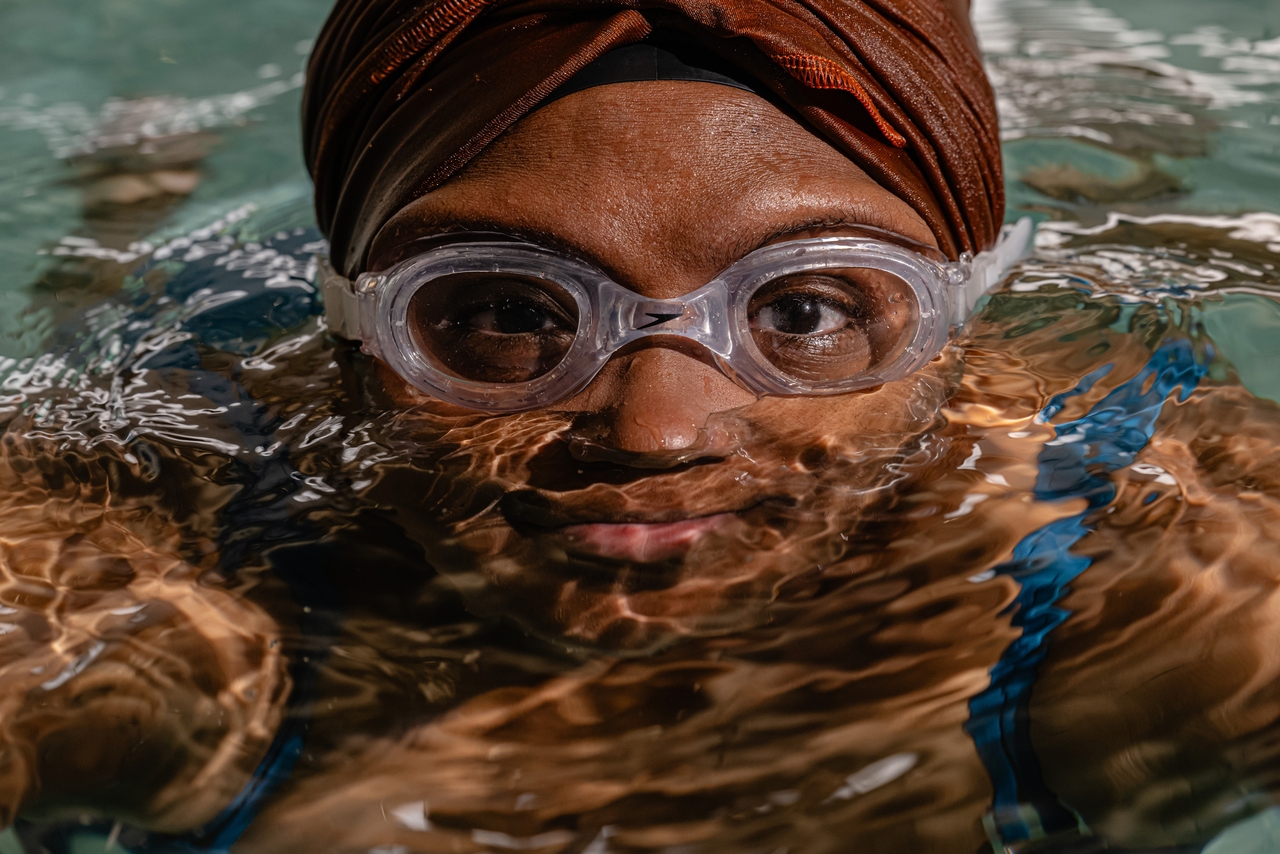Entertainment
How A Viral Racist Incident Made Me To Learn To Swim

It was Aug. 6, 2023, and social media was filled with memes and commentary about a dockside fight that took place in Montgomery, Alabama, the day before. In the definitive video of the event, a group of about six white people began to argue with a Black co-captain who was trying to dock a cruise ship in its reserved space.
Unfortunately for the white people, they attacked the co-captain in full view of a crowd containing lots of Black folk. As bystanders hustled to help, a young Black man dove into the water from an approaching boat. He broke into a fast and steady freestyle swim, pulled himself out of the water, removed one shoe and squared up like he had been training for this moment his whole life. The scene turned into a full-on melee. Black people laid down destruction (and in one instance, a white folding chair) in an ancestral display of justice and community.
I couldn’t stop thinking about the swimmer. The internet called him “Aquaman.”
The next day, I signed up for swim lessons.
Water filled me with a sense of wonder and play when I was a girl: long bath times, kiddie pools, playing with my Barbies in the bathroom sink. Swimming was more complicated. No one in my household knew how to swim, so neither did I, which put me in the nearly 64% of Black kids who don’t know how to swim.
But the friends in my suburban, mostly white neighborhood spent their summers in the 4-foot-deep, above-ground pools that dotted the backyards of the block. The white girls did their best to teach me how to hold my breath, make big circles with my arms and kick my feet to propel myself underwater. However, I couldn’t unlock the skill level to float or swim above the surface like them. Their bodies were buoyed by a freedom I couldn’t imitate.
I remember the last time I was in one of those pools. The arm floaties I was wearing slipped off, and I began to sink. Swirls of bubbles and beams of sunlight encased me in a beautiful but terrifying embrace. I flailed my arms and legs, but the surprise of the descent erased everything I’d learned from my friends. After what felt like minutes, a set of strong forearms that probably belonged to someone’s dad pulled me out of the water. I gulped in air, and a fear of water began to settle into my bones.
I carried this unease toward swimming into adulthood. But I’m a water sign. I could hear the whispers from pools and lakes and oceans: “Come back.” The swimmer in the Montgomery brawl, and the community display by the water, amplified the call.
A couple of months after the fight, I padded into the cavernous indoor pool at the YMCA in a turquoise bathing suit and copper swim turban. Floating dividers on the left side of the pool created three swimming lanes that started at 4 feet deep and ended at 6. The pool was more shallow on the right, where a water slide and splash feature entertained kids in the summer.
Cold water lapped at my legs as I descended into the shallow end. I joined two women standing in front of the man who was our instructor. For the first half of the class, we did everything but swim. We dipped our faces into the water to get comfortable with the sensation. Then, we opened our eyes and exhaled through our noses while submerged. With my feet planted, I felt safe and in control. Then, we gripped the edges of the pool and practiced kicking. To my surprise, it was all in the hips, not the knees. I forced my stiff hip sockets to move the entirety of my legs up and down and let my torso sway along.
Finally, it was time to move away from the edge of the shallow end. Our teacher explained how to float: Lie back into the water, arch your back and lift your legs up and out in front of you. Our lungs are filled with air, he explained, so our torsos naturally want to float.

“Your body’s already doing half the work,” he said.
It seemed too simple. Then I realized what would be the hardest part for me: I had to trust in my own body. I had to believe that my body and the water would work together to keep me from drowning. I had to surrender. I lowered myself into the pool until I was horizontal. The noise of the cavernous space condensed to a hum as the water covered my ears. I gazed at the ceiling that I hadn’t noticed was so high. I heard myself take a deep breath.
I was floating. I was free from fear. I knew I would be OK.
I spent the next five Saturdays in that pool, instructing my body to follow the steps the instructor showed us to get from one end of the pool to the other. I learned to count strokes in my head and coordinate the movements of my arms and legs in time. Though we learned freestyle and breaststroke, I often returned to my favorite: the backstroke.

It’s been a year since I signed up for those classes. Along with swimming at the Y pool, I’ve joined a water aerobics class. Every Friday morning, a group of mostly older Black women bob in the water in swim caps, headscarves, bandanas and shower caps. We complete medleys of moves that work up a sweat even when our bodies are already soaking wet. I’ve inched farther toward the deep end of each class for a more challenging workout.
At the peak of summer, a group of junior lifeguards stood along the wall and waited for the water aerobics class to finish so they could start training. About 20 minutes in, I glanced behind me and saw a group of girls in the shallow side of the pool, performing the same moves as us. Then the boys joined them. By the end of the class, the teenagers and adults were clapping and wooting over the dance-hall music blasting from the speaker. We were a community. And in the water, I felt like I was home.










